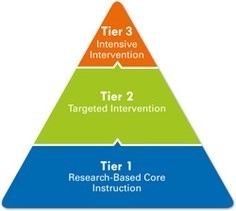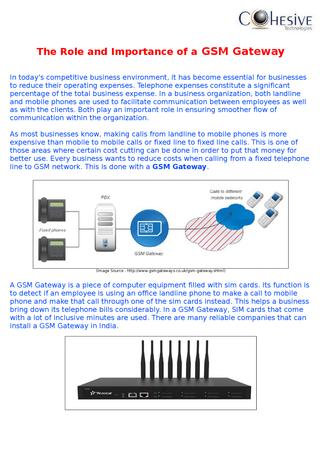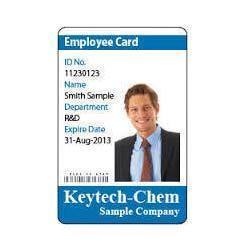
The net profit/loss made by the company is summarized and grouped into reserves & surplus in the balance sheet. The net profit/ loss is the summary of various income & expense accounts. One way these accounts are classified is as temporary or permanent accounts.

Permanent accounts, unlike temporary accounts, do not need to be closed out at the end of the term. For example, at the end of the accounting year, a total expense amount of $5,000 was recorded. The amount is transferred to the income summary by crediting the expense account, consequently zeroing the balance, and an equal amount is recorded as a debit to the income summary account.
Permanent accounts
In the end, this aids in the overall enhancement of business management. Temporary accounts track your company’s performance over a given period and get reset when the next period begins. Permanent accounts keep track of your business’s overall progress because they are cumulative. Hourly payroll software makes it easy to run payroll and automatically calculate temporary account expenses, including wages, payroll taxes, and workers’ comp insurance payments—all in real time. Instead, when the next accounting cycle begins, all of your temporary accounts reset to zero.
Understanding the differences between permanent and temporary accounts allows business owners to better understand their company’s financials, giving them an edge when making sound business decisions. With increased financial literacy, businesses can make more educated choices and maximize their investments. The origins of these temporary accounts can be traced back centuries ago when merchants would use them to keep track of their transactions and assets.
By understanding the nature of these accounts and the transactions they’re designed to record, you can ensure the integrity of your financial data. Remember, the goal is not just to record transactions but to paint a precise financial picture of your business that informs strategic decision-making and complies with accounting standards. At the end of each accounting period, temporary accounts are closed and reset to zero. Conversely, permanent accounts are never closed; they carry their balances forward into the next accounting period.
Where Do Temporary Accounts Originate?
Some examples of permanent accounts include assets account, liabilities account, and the owner’s equity account. To find information such as expenses or revenue for a given period, you’ll use income statement accounts, which are temporary. The income statement shows a report of your business’s performance for a specific period, such as one year. Balances for permanent accounts are recorded on your balance sheet, showing the company’s finances at that moment. Because of this difference, temporary accounts help you track your business’s progress over a specific period of time, such as one quarter or one year.
Consequently, when the next fiscal period begins, the account continues with the closing balance it had from the previous fiscal period. Temporary accounts are in the grouping of income statement accounts. Below is a list of temporary accounts and a detailed explanation of their meaning. They are the accounts that don’t have their balances carried forward at the end of an accounting period but are nonetheless tied to a certain fiscal period. You or your accountant ultimately decide what temporary accounts to create, depending on what you want to track. But here are some examples of commonly used temporary accounts to help you get started.
What Does Temporary Account Mean?
At the same time, the temporary expense account must also be closed out. If, for example, the account records expenses of $5,000 for the period, a credit for the same amount will be recorded as a closing entry bringing the ending balance to zero. Since permanent and temporary accounts come differently, understanding how to classify them properly helps businesses implement strong internal controls over their finances. It enables them to prevent errors from occurring due to incorrect data entry or misunderstandings about how to use each account.

With knowledge of permanent and temporary accounts, businesses can make more informed financial decisions. For example, a business may use long-term rather than short-term financing if they are confident that the investment will yield future returns. Understanding the differences between temporary and permanent accounts can be confusing accounting.
Example of the Use of a Temporary New Account
Asset accounts track everything a business owns, including physical items (e.g., inventory) and less tangible property (e.g., stocks). Companies come to BlackLine because their traditional manual accounting processes are not sustainable. We help them move to modern accounting by unifying their data and processes, automating repetitive work, and driving accountability through visibility. While the responsibility to maintain compliance stretches across the organization, F&A has a critical role in ensuring compliance with financial rules and regulations. Together with expanding roles, new expectations from stakeholders, and evolving regulatory requirements, these demands can place unsustainable strain on finance and accounting functions.
Warplane Reconnaissance Sparks Panic Among IDPs Along … – Burma News International
Warplane Reconnaissance Sparks Panic Among IDPs Along ….
Posted: Tue, 22 Aug 2023 06:55:14 GMT [source]
In the modern age, businesses use software programs like Quickbooks to generate these accounts and allow for better tracking of resources and money flow. With the help of computers, manual input is no longer necessary, making record-keeping much easier than it used to be. At the end of that period, financial professionals include a closing entry, so the balance returns to zero. Any balances remaining in those accounts are transferred to a permanent account. Accountants then prepare financial documents to show that this took place.
While this account isn’t completely necessary, it can help you keep a record of what money got transferred in case you undergo an audit. While this might sound like a small difference, it changes how you interpret the balance for each account type. We’re firm believers in the Golden Rule, which is why editorial opinions are ours alone and have not been previously reviewed, approved, or endorsed by included advertisers. Editorial content from The Ascent is separate from The Motley Fool editorial content and is created by a different analyst team. Christopher Carter loves writing business, health and sports articles. He enjoys finding ways to communicate important information in a meaningful way to others.
Temporary MCD employees will be regularised: Arvind Kejriwal – The New Indian Express
Temporary MCD employees will be regularised: Arvind Kejriwal.
Posted: Tue, 22 Aug 2023 03:55:00 GMT [source]
However, there are few exceptions to temporary accounts which are not reported in income statement even though they are in nature temporary accounts and one of them is Drawings account. Drawing account is reported as a deduction from owners’ capital in the balance sheet or statement of financial position. Similarly any account which holds the transactions about appropriation of profits is also a temporary account. A point to remember is that results or balances from temporary accounts are reported in income statement and not in the balance sheet. Balance sheet is prepared at the end of accounting period and contains only those accounts which are carried forward to the next accounting period.
Synder, a powerful automated accounting software, can play a pivotal role in better managing temporary and permanent accounts in your business. Synder can streamline your accounting processes, ensuring accuracy and efficiency in handling both types of accounts and provide clear picture of your cash flow. Also known as nominal accounts, temporary accounts are fundamental tools for recording and summarizing the financial activities of a business within a single accounting period. Their primary role is to gather data related to income, expenses, and dividends, offering insights into the performance of the business during that time frame. Permanent accounts are accounts that you don’t close at the end of your accounting period.
- Whether you’re new to F&A or an experienced professional, sometimes you need a refresher on common finance and accounting terms and their definitions.
- Gain global visibility and insight into accounting processes while reducing risk, increasing productivity, and ensuring accuracy.
- In a business, there are many different types of accounts that can be used to manage finances.
- It is not a temporary account, so it is not transferred to the income summary but to the capital account by making a credit of the amount in the latter.
Temporary accounts work by serving as a repository for all revenue and expense transactions. These transactions accumulate throughout the month or until the accounting period is over. Permanent accounts, on the other hand, have their balances carried forward for each accounting period. Closing these accounts helps to ensure that transactions that occurred in the current accounting period are not included in the following period. As CEO and Co-Founder, Mike leads FloQast’s corporate vision, strategy and execution.
Revenue, costs, and dividends are instances of transitory accounts; assets, liabilities, and equity are examples of permanent accounts. Temporary accounts include revenue accounts, expenses accounts, gain or loss on capital transactions accounts, memorandum accounts & any drawing account. Generally, these accounts are used to prepare the business’s Income statement. At the end of the period, closing entries are recorded to summarize the balance of the temporary accounts which gives us the net profit/loss made by the business for the period. This profit after distribution of dividend or any loss made is shown as part of reserves and surplus / retained earnings in the balance sheet & technically it is part of the owner’s equity.